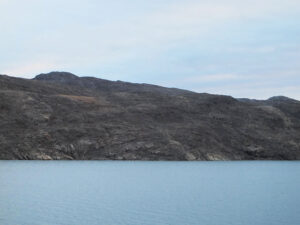Backcountry China contains some of the world’s most dangerous hikes and exotic climbs. From slippery stairs to rickety planks to near-vertical crumbled stone steps, these mountains are terrifying and invigorating in equal doses. Before you try them, know what you’re getting into…
Mount Hua
Huashan or Mount Hua (“shan” means mountain in Chinese) is one of the five great mountains of China. This “western mountain” lies in Shaanxi province in the northwest. For centuries, it has been a sacred site for pilgrims. A creepy mist often shrouds its 2,154m summit.
Hiking this mountain is not for the faint of heart. The almost vertical slopes, narrow pathways, and questionable safety installations have added to its reputation as the world’s most dangerous hike.
It does not matter how brave you think you are. Every route is hard and dangerous, triggers a fear of heights you never thought you had and forces you to become almost a climber rather than an average bumbling tourist.

Walking the planks along Mount Hua, in Shaanxi province near Xi’an, China. Photo: Flocu/Shutterstock
It is rumored that 100 people die on Huashan every year, although authorities refuse to release any official statistics. With images starting to circulate online and an inevitable boom in tourism in recent years, the government began to reinforce walkways, install chains and railings, and invest in safety equipment.
However, these do little to quell vertigo or the fear of a possible 1,000m drop into oblivion. There are many paths you can take; the slow, six-kilometre Standard Path, the strenuous Soldier’s Path, with almost vertical slopes and dizzying stairs, the selfie hotspot known as Golden Lock Pass, and more.
To visit various tea houses and Taoist temples scattered across the mountain, you must detour off the main paths and onto slippery rocks. However, the most iconic section is the Plank Walk, a terrifying shuffle across the mountain’s southern face on foot-wide rickety planks. In some spots, the planks are deteriorating or missing.
Hikers must wear a harness and can’t unhook both clips at the same time. For those wanting to take a shortcut to avoid being slid over by others coming from the opposite direction, you can use the sky ladders (not pictured). The South Peak is the highest and most popular for this plank nightmare.
Sichuan Mountain Ladders
All parents have done this: exaggerate their struggles of just getting to school. The daily trek is cold, or far away. Children are supposed to appreciate how easy they have it.
The residents of Atule’er village in Sichuan province lived a truly difficult school trek for many years. This small village is situated on a mountain face, 1,400m above the valley. Adults and their children climbed bamboo and rusty metal ladders up an 800m cliff in order to attend school, go to the hospital, and visit local markets. When the kids were old enough, they made the journey themselves and stayed in dormitories on weekdays.

Children climb sky ladders on their way to school. Photo: Chen Jedi/Beijing News
The villagers had been doing this without complaint since the village was established 200 years ago. The 800m vertical climb took two to four hours. Many fell to their deaths.
Eventually, the authorities installed steel ladders with railings, but accidents still happened. It was a way of life for the villagers until the story of this hair-raising commute broke in 2016.
Images of mothers carrying supplies with babies on their backs shocked the world and sparked outrage. Both international and state media highlighted the plight of the extremely poor villagers.
The unconventional commute led to a 40 percent illiteracy rate in the village. The students were too tired to do homework. Eventually, regional authorities relocated the residents to apartments in Zhaojue, a town with all the basic services 70km away.
Although residents no longer need to climb the ladders daily, tourists have begun to trickle into the area to recreate the experience.
Zhangjiajie National Park
In the movie Avatar, James Cameron used China’s incredible Zhangjiajie National Park as the locale for his otherworldly, alien vision. Millions of years of erosion have produced “forests” of sandstone pillars. Tectonic movements pushed the quartzite sandstone up from the ocean floor. Freezing and melting within the sandstone caused the softer rock to crumble away.
Now, these weird spires with bits of foliage remain. The 4,800-hectare park features over 3,000 pillars with heights up to 400m. The high-quality sandstone has no loose rocks and plenty of cracks and irregularities for climbing.

The pillars of Zhangjiajie. Photo: Aphotostory/Shutterstock
Climbers weren’t allowed to attempt these pillars until 2016. A team led by Mayan Smith-Gobat and Ben Rueck made many first ascents and plotted routes ranging from 5.10a to 5.13c. They include the Dragon’s Nest (5.13a), a 300m wall for experienced trad climbers; the Dragon Lady (5.10a-5.11b), a 300m wall with a more mixed climb, Kyo Run (5.11a), and Kungfu Emperor, a difficult 60m 5.13c experience.
Wild Wall
China’s Great Wall is a 21,196km-long architectural masterpiece that took 2,000 years to complete. Over the centuries, many sections have deteriorated or even disappeared. In 1994, British conservationist William Lindesay coined the term Wild Wall to describe a still-standing but unrestored part of the Great Wall. Although it’s only a couple of hours from Beijing, few foreign tourists venture there.
The Jiankou section of the Wild Wall is the most difficult stretch, built in the 14th century during the Ming Dynasty. It follows the crest of several mountains and features steep dropoffs on both sides. It begins at a village called Xizhazi and runs 20km to Mutianyu.
In places, steep dolomite steps have crumbled. The most famous of these is the almost vertical Sky Stair. There are also a few breaks in the wall, where scrambling becomes actual climbing and a slip leads to a potentially fatal drop into the forest far below.
The video below shows one such section. Unlike the woman in the clip, almost no one uses a rope.
Video: Jerry Kobalenko
Every year, an average of three people die here. Some sections are easy strolling. Then every few hundred metres, a normal walk becomes a mad scramble.
Because of the danger, authorities decided to start restorations in 2015. So far, they have managed to fix a 750m section. The restoration is ongoing. In the meantime, adventurous and sometimes ill-prepared folk continue to scramble it, even in winter or in rain.

A non-climber free solos a ticklish section of the Jiankou Wild Wall. Photo: Jerry Kobalenko
Great Arch of Getu
If you like hanging from a cave roof like a bat, the Great Arch of Getu in Guizhou Province is for you. This magnificent 70m wide limestone arch opens into the Chuangshang Cave and is a hotspot for climbers in China. Overlooking the Getu River, the cave was once an ancient limestone reef thrust up to the Earth’s surface. Its sharp tufts, crags, cruxes, and cracks run 120m up from floor to roof, providing ample opportunities to test trad and sport climbing skills.

Great Arch of Getu Valley. Photo: Ray Millar/naturalarches.org
Locals have climbed the arch for hundreds of years. In 2008, the China Mountain Development Institute began installing bolts. Two years later, Spanish climber Dani Andrada created an eight-pitch route. In 2011, Andrada returned and made the first ascent. Called Corazon de Ensueno, it earned a grade of 5.14b.
In 2016, Alex Honnold and Felipe Camargo climbed it. In 2018, Edu Marin established another route. Needless to say, given the sort of climber drawn here, these routes are highly technical. Others dub them some “of the craziest climbs” ever.
Huangshan
The 60,000 granite steps carved into the face of Huangshan, or Yellow Mountain, are not as intimidating as they look. This legendary peak is named after the Yellow Emperor Huang Di. He is said to have ascended to heaven on these very steep granite slopes.
The mountain’s iconic presence has featured in literature, art, and photography. In the film Crouching Tiger, Hidden Dragon, Ang Lee staged the famous sword fight in the trees in the valley at the foot of Huangshan.

Fairy Bridge, Huangshan. Photo: Jerry Kobalenko
The highest peak is 1,800m, and three main hiking routes lead up: the western steps, eastern steps, and West Sea Canyon. For the less vigorous, a cable car also leads up to a hotel. Hundreds crowd a small viewpoint at sunrise but thin out as the paths become steeper and crazier. In the West Sea Canyon, the Fairy Bridge connects two cliffs.
Some stone staircases wind so tightly that they can make you dizzy — not an ideal sensation in such a place. The wrap-around stairs are relatively safe but still instill fear in those inclined to vertigo.






